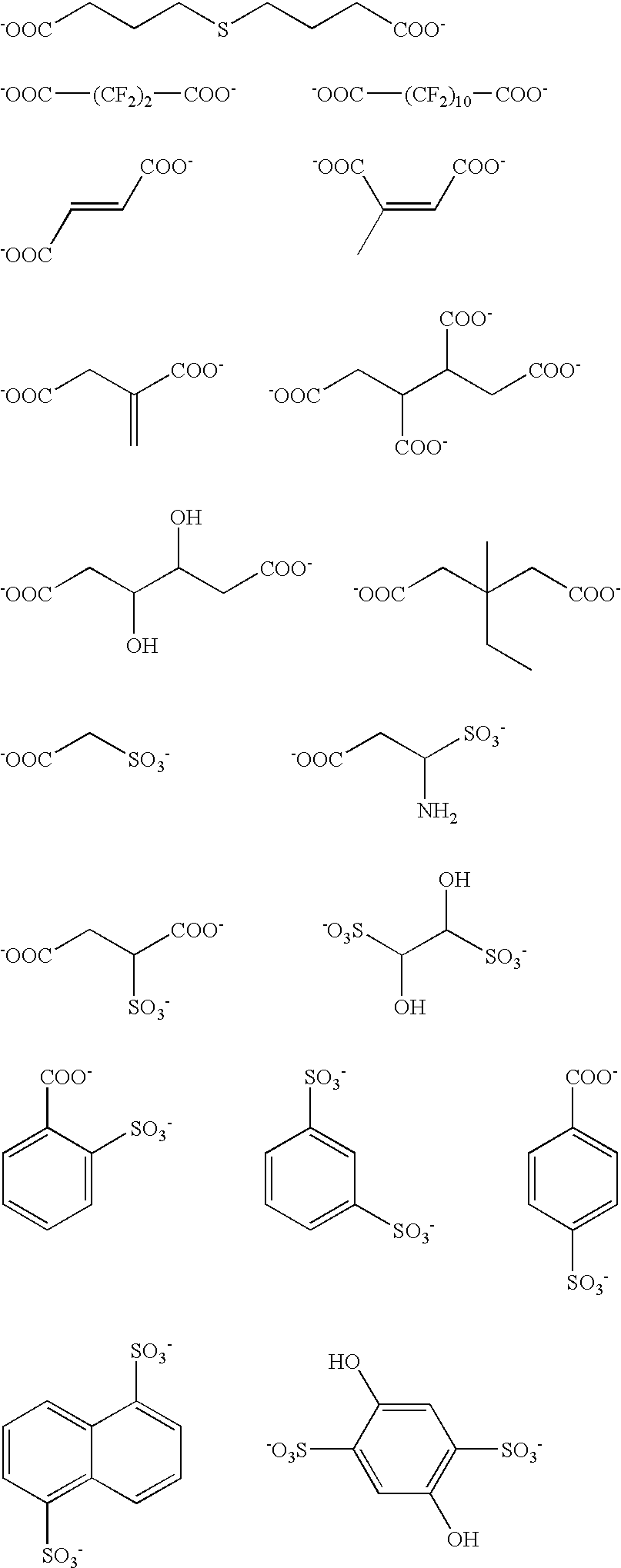Planographic printing plate precursor
a technology of precursors and printing plates, applied in thermography, instruments, photosensitive materials, etc., can solve the problems of insatiable sensitivity, complex devices and high energy consumption, and often large heat treatment equipment, and achieve satisfactory high-sensitivity recording materials for practical us
- Summary
- Abstract
- Description
- Claims
- Application Information
AI Technical Summary
Benefits of technology
Problems solved by technology
Method used
Image
Examples
production example 2
Production of Polyvalent Anionic Onium Salt Compound (IB-14)
60 g of t-amylbenzene, 39.5 g of potassium iodate, 81 g of acetic anhydride, and 170 ml of dichloromethane were mixed, and to this was gradually dropwise added 66.8 g of concentrated sulfuric acid while being cooled with ice. This was stirred for 2 hours while being cooled with ice, and then for 10 hours at room temperature.
While being cooled with ice, 500 ml of water was added to the reaction liquid that had been stirred for 10 hours at room temperature, and a component dissolved in the reaction liquid was extracted with dichloromethane. The dichloromethane-containing organic phase was washed with aqueous sodium hydrogencarbonate and then with water. After being thus washed, the organic phase was concentrated to obtain di(4-t-amylphenyl)iodonium sulfate. The sulfate was put into an excess amount of aqueous potassium iodide. The resulting aqueous solution was extracted with dichloromethane and washed with water, and this or...
examples
The present invention is now described in detail by reference to the following Examples, which, however, are not intended to restrict the scope of the present invention.
examples 1 to 10
Preparation of Supports:
An aluminium sheet (#1050) having a thickness of 0.3 mm was degreased by washing it with trichloroethylene, and then its surface was sand-grained and etched with an aqueous pumice suspension, using a nylon brush. The sheet was washed with water, then dipped in 20% nitric acid, and again washed with water. A degree of surface etching of the sand-grained surface of the sheet was about 3 g / m.sup.2.
Next, the sheet was electrolytically processed with an electrolyte, 7% sulfuric acid, while applying a direct current having a current density of 15 A / dm.sup.2 thereto, to form an oxide film (3 g / m.sup.2) on the surface. After being thus processed, the sheet was washed with water and dried. This is referred to as a support (A).
The support (A) was further processed with an aqueous 2 wt. % sodium silicate solution at 25.degree. C. for 15 seconds, and then washed with water. This is referred to as a support (B).
Formation of Interlayer:
A liquid composition (sol) was prepar...
PUM
| Property | Measurement | Unit |
|---|---|---|
| maximum absorption wavelength | aaaaa | aaaaa |
| maximum absorption wavelength | aaaaa | aaaaa |
| absorption wavelength | aaaaa | aaaaa |
Abstract
Description
Claims
Application Information
 Login to View More
Login to View More - R&D
- Intellectual Property
- Life Sciences
- Materials
- Tech Scout
- Unparalleled Data Quality
- Higher Quality Content
- 60% Fewer Hallucinations
Browse by: Latest US Patents, China's latest patents, Technical Efficacy Thesaurus, Application Domain, Technology Topic, Popular Technical Reports.
© 2025 PatSnap. All rights reserved.Legal|Privacy policy|Modern Slavery Act Transparency Statement|Sitemap|About US| Contact US: help@patsnap.com



